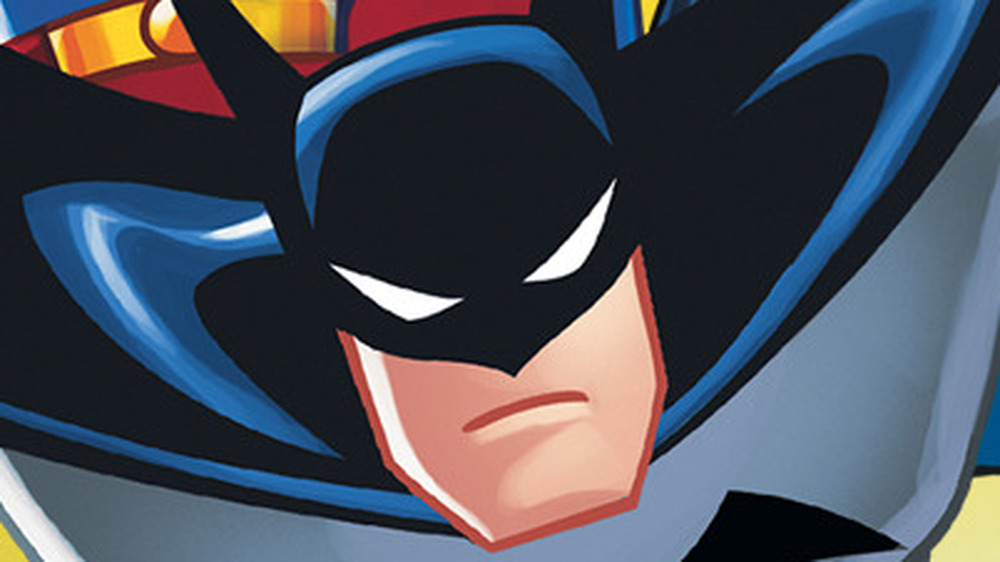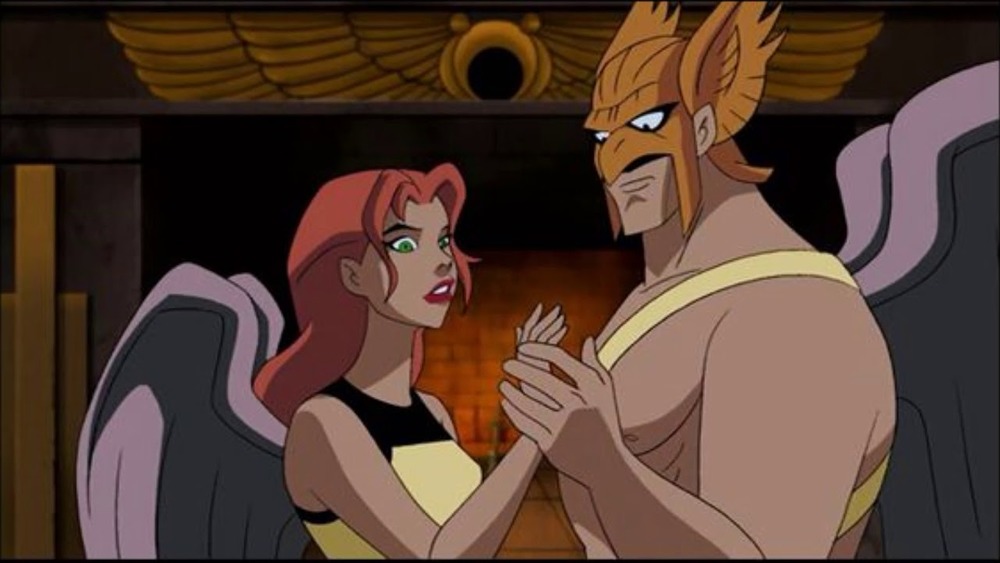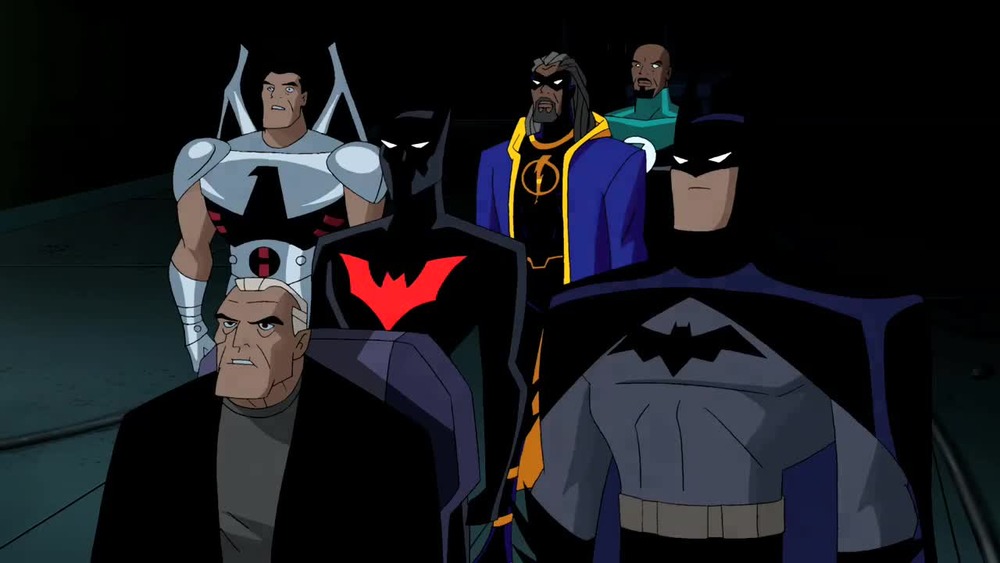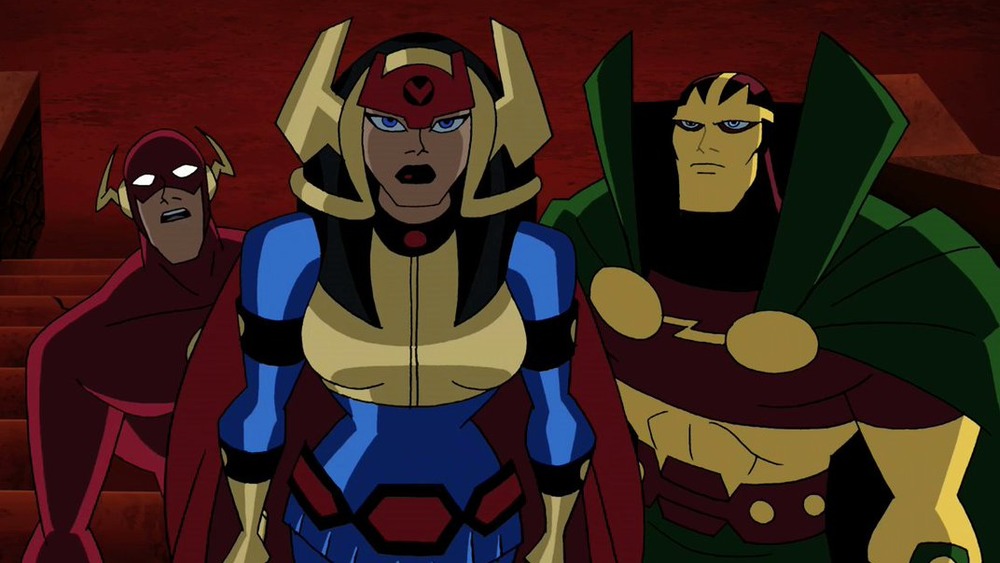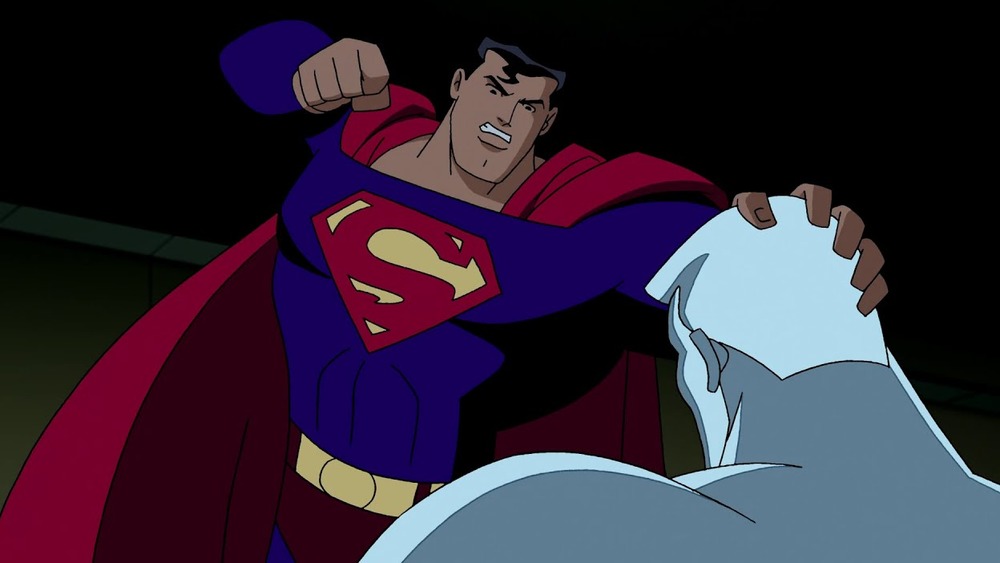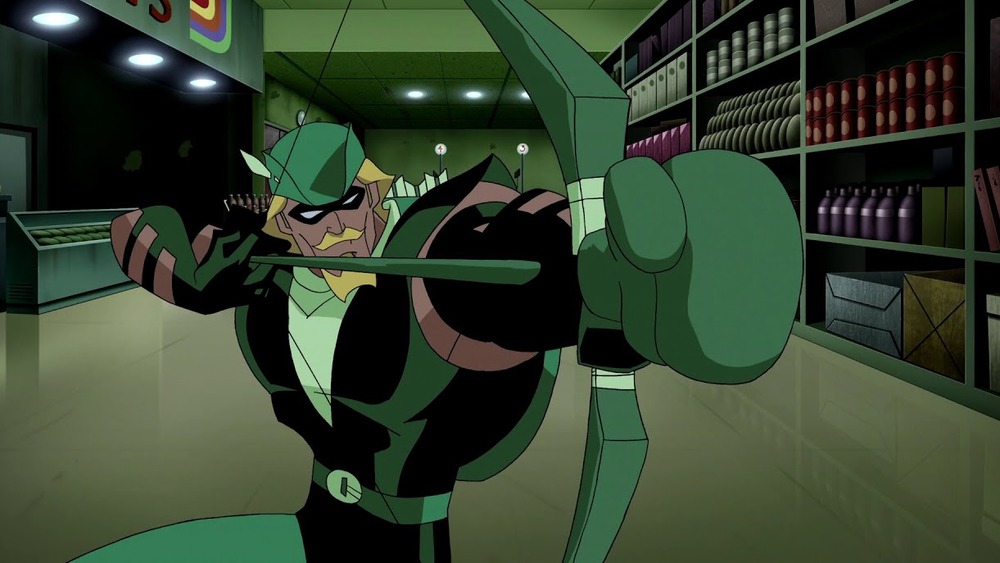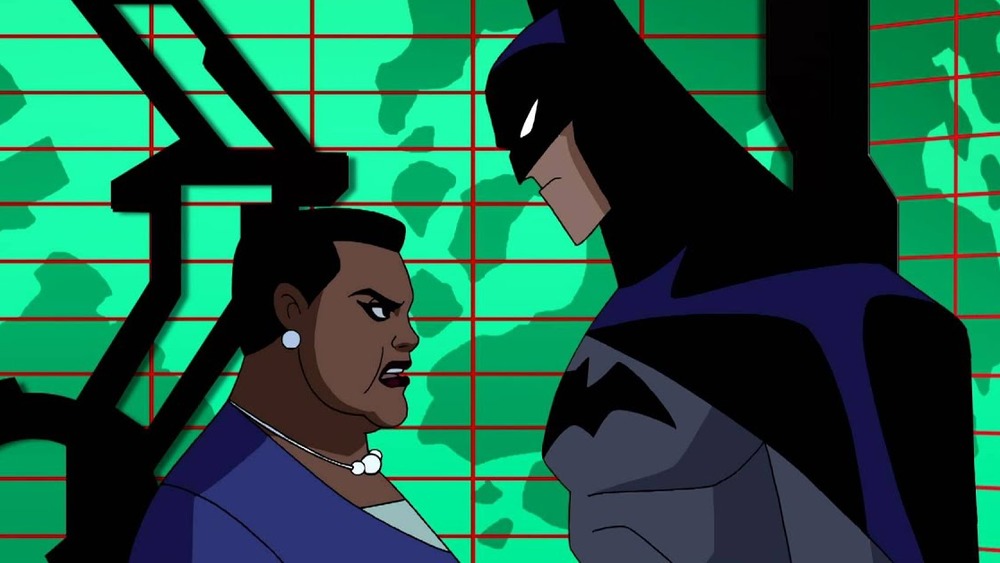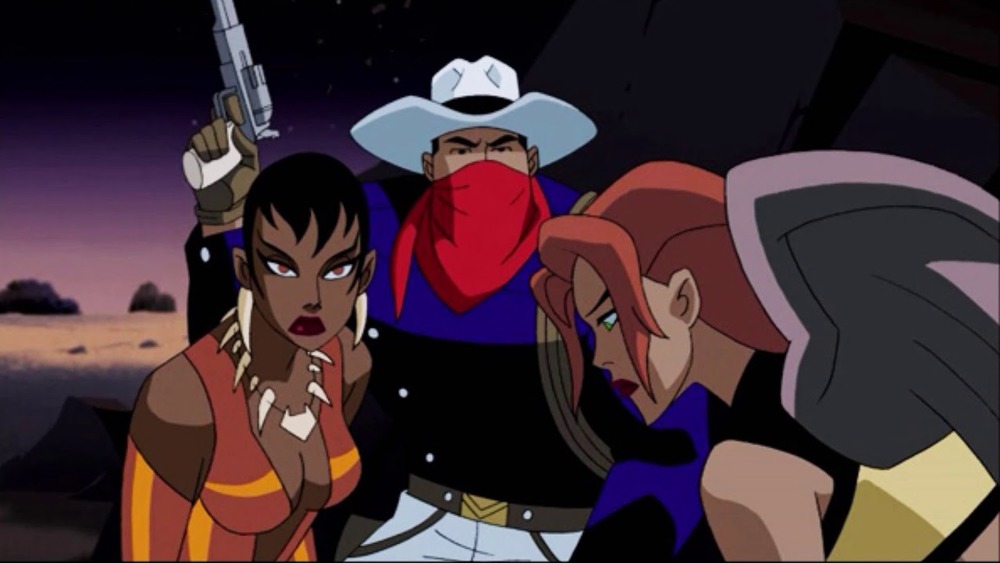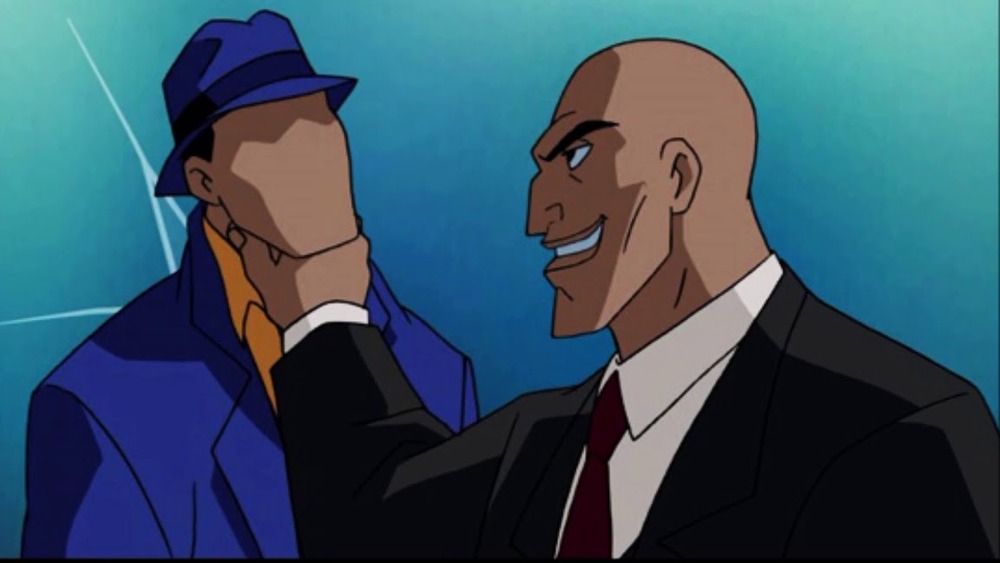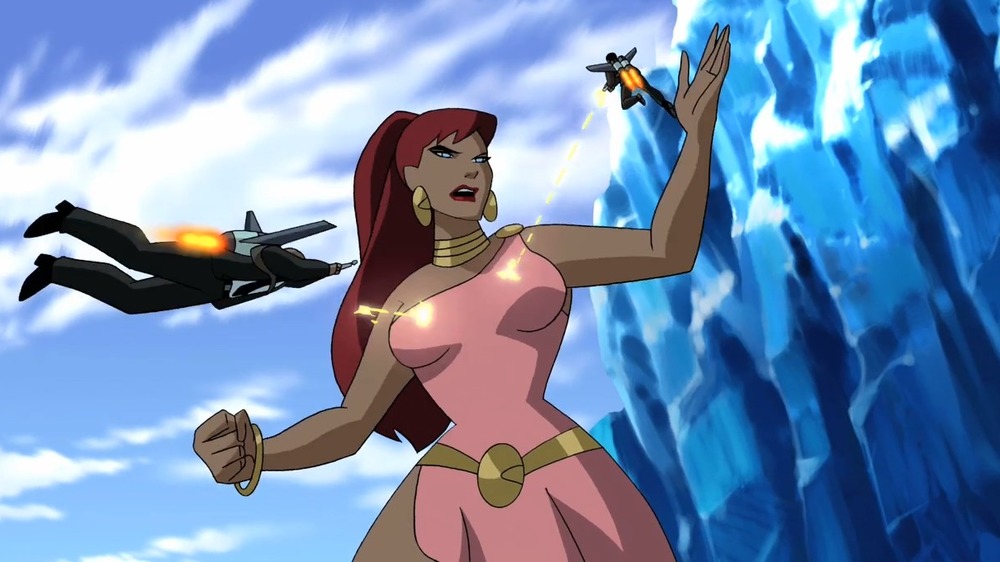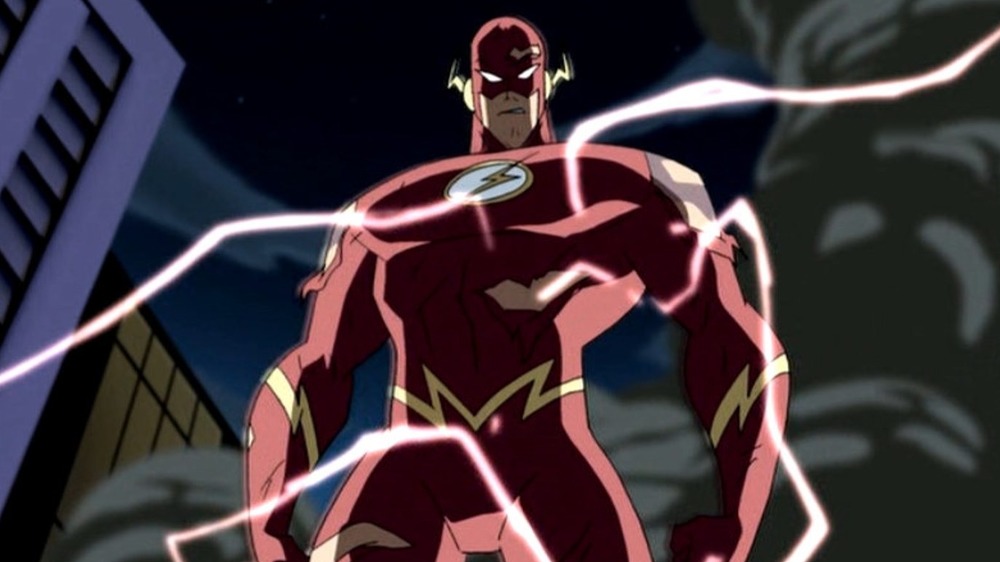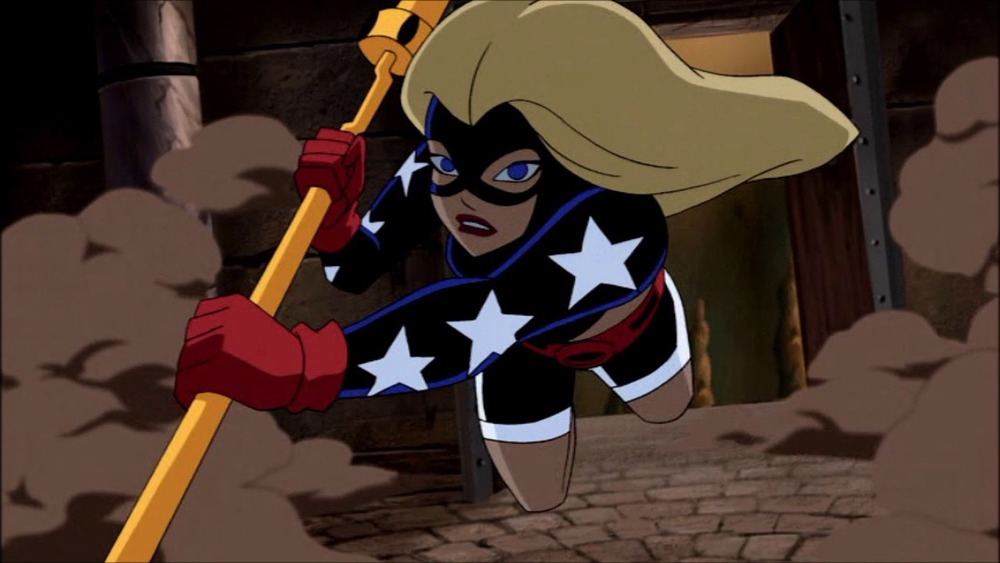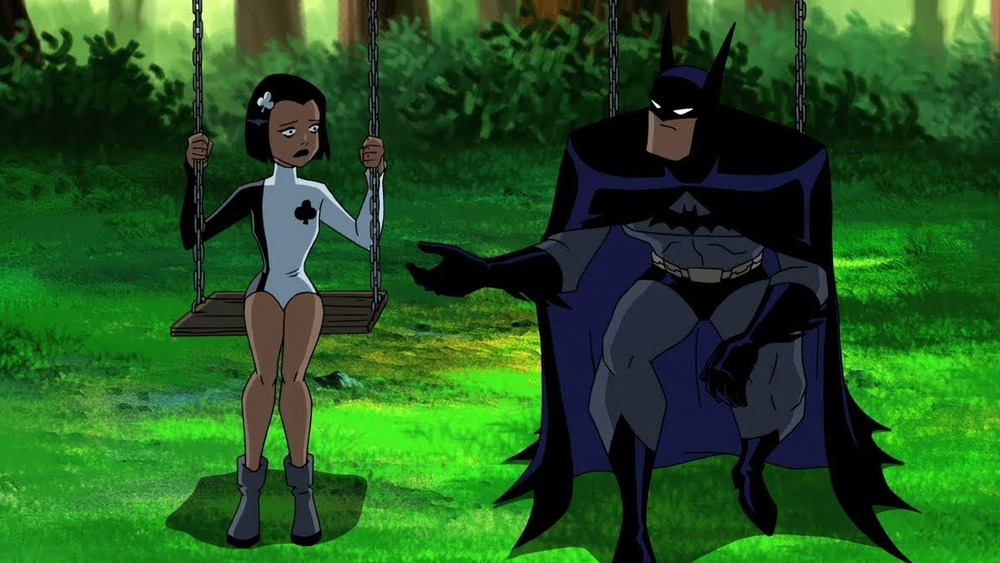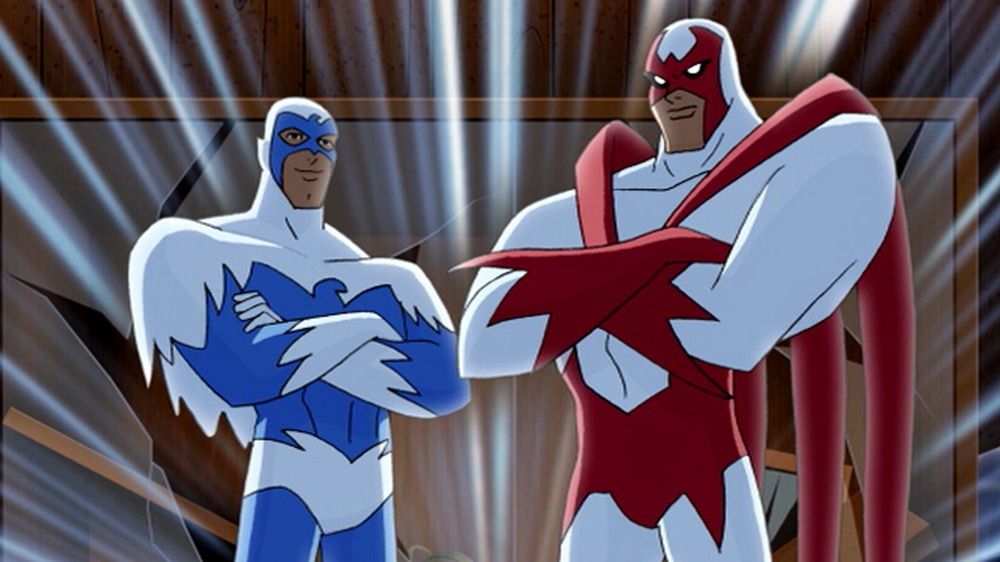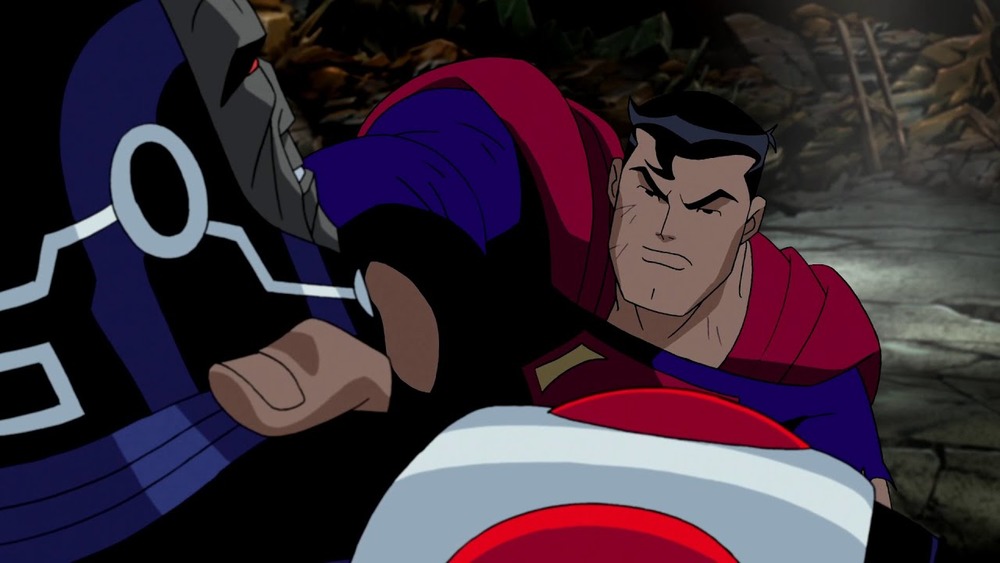7 Best And 7 Worst Episodes Of Justice League Unlimited
Anyone who's ever asked a room full of superhero fans whether Marvel or DC makes better movies knows that argument always escalates into screaming, crying, violent outbursts, and litigation over unpaid hospital bills. But as far as which company dominates the market for high-quality animated adaptations, there's some degree of consensus that the Distinguished Competition outclasses the House of Ideas.
DC certainly cranks out the wider variety of animation. Marvel's cartoon projects of recent years tend to cater to children and pre-teens. Meanwhile, DC offers DC Super Hero Girls for viewers ill-equipped for adult themes; while on the other end of the spectrum, there's Justice League Dark: Apokolips War for bloodthirsty maniacs who enjoy "adult themes" way too much. For the well-adjusted, socially-functional, correct type of superhero media consumer, there're multiple seasons of both Young Justice and Harley Quinn.
And then there's the apex of animated DC endeavors – Justice League Unlimited (JLU).
The original DC Animated Universe (DCAU) encompasses a handful of shows that aired from the early '90s to the mid-'00s, starting with Batman: The Animated Series and ending with JLU, give or take an occasional feature-length adventure. Not since Super Friends wrapped in 1985 had a program set out to include as many DC characters and settings as possible. JLU's sprawling all-star voice cast, plus the literal and figurative multiverse of environments, resonate as "true to the comics" to a degree that animated adaptations generally do not approach. Even the "bad" episodes are worth a glance...
Worst #7: Shadow of the Hawk (7.7)
Shayera Hol — or "Hawkgirl" as her teammates refer to her on the first Justice League series — is not the focal point of a string of blockbuster movies; she doesn't star in her own monthly comic; when DC needed a Hawkgirl for Legends of Tomorrow, they wrote Kendra Saunders into the CW series instead.
But in the DCAU, at least two major plot twists hinge on Shayera's decisions. And while children's cartoons usually don't have much incentive to dwell on moral subjectivity, her conflicting allegiances present the Leaguers with rare problems they can't necessarily resolve through a vigorous fistfight.
But because she can't quite match the cultural ubiquity of her most famous teammates, Shayera inevitably alienates and/or confuses viewers who freak out whenever presented with anything they haven't seen a million times before. So IMDB gives this episode a C+ basically because it's a Shayera episode, not due to actual mediocrity. Who the heck watches Batman fight a sentient shadow and thinks, "Ah, this deserves a blasé internet review, for sure"?
Best #7: The Once and Future Thing, Part. 2: Time, Warped (8.7)
Seems like whenever superheroes get involved with time travel nowadays, a bunch of paradoxes inevitably arise and tangle up folks' comprehension. But back in the heyday of JLU, writing teams only ever used time travel as a glorified excuse for characters to join forces with their counterparts from different series.
The events of wibbly wobbly, timey wimey tales like the two-part "The Once and Future Thing" were either self-contained or undone by the time our heroes completed their necessary tasks. Everyone had fun. Nobody got a headache.
Hence the JLU audience's enduring fondness for the season 1 finale, in which the Leaguers sojourn to the cyberpunk future, Green Lantern meets his adult son, and they all get their butts kicked by a gang of plausible Rocky Horror Picture Show extras, possibly explaining the title.
Static and future Batman Terry McGinnis had both starred in series of their own recently enough for the Cartoon Network viewership to remember them, which could account for why Part 2 is more popular than the Wild West-based Part 1. In 2005, we were all excited to see Batman Beyond again, but none of us had ever heard of Jonah Hex before.
Worst #6: The Ties That Bind (7.6)
A story about The Flash traveling to Apokolips to team up with Mister Miracle and Big Barda sounds like a sure-fire fan favorite. And yet, somehow, that exact scenario unfolding in the DCAU doesn't inspire universally-glowing reviews from IMDB users.
Maybe there's a timing problem here? Excluding Darkseid, who never goes out of style, Jack Kirby's New Gods experienced a lapse in public interest during the mid-'00s. Mister Miracle by Tom King and Mitch Gerads wouldn't put Scott Free back on the map until something like 12 years after JLU season 2. In 2019, a few years after the King/Gerards series, the entire third season of Young Justice heavily features characters from Apokolips and New Genesis, and its review average never drops below 8.0.
But maybe the problem with "The Ties That Bind" isn't as complicated as we think. Accidental abrasiveness is part of what makes the Michael Rosenbaum-voiced version of The Flash endearing, but it's also a good reason why he shouldn't talk in every scene.
Best #6: Flashpoint (8.9)
Let's say the DC superheroes were real. Now let's say they all joined forces, and went to live on an orbiting space station with an attached giant death laser pointed straight down at the Earth. Even if you think of Superman as a basically okay guy, you might find it unsettling to know he can definitely kill you and everyone you know any time he feels like it.
"Flashpoint" — no relation to the comics saga of the same name — has its cake and eats it too. It starts with an angry superhero vs. sad superhero fun-but-dumb slobber-knocker, then earnestly poses the question whether or not this much raw destructive power should ever be controlled by any single organization or person. Thematically, the season 2-spanning arc concerning Amanda Waller's possibly correct anti-Justice League agenda arrives at the same philosophical destination as comics like Marvel's Civil War and DC's Kingdom Come. But it takes a wildly different, figuratively and literally more animated route to get there.
Worst #5: Initiation (7.6)
It could be that JLU needed a few episodes to build a consistent rhythm and sense of its own scope, but "Initiation" nevertheless holds up as a decent, imperfect series premiere.
Making his first DCAU appearance, Green Arrow reluctantly joins apparently more capable Leaguers Green Lantern, Supergirl, and Captain Atom on a mission to thwart a gargantuan nuclear monster-related dilemma. The new cast lack the chemistry and clearly-defined roles we'd grown accustomed to from the original Justice League team, none of whom join Arrow and co. during this episode's main adventure. Maybe we can chalk up some of the negative reviews up to familiarity bias, but it's not like anyone could reasonably expect Captain Atom to immediately feel like a suitable Superman replacement.
We don't know how far ahead the showrunners planned, but the fact that Supergirl and Atom both play prominent roles in upcoming season-spanning JLU stories leads us to suspect they mapped quite a bit out in advance. "Initiation" also deserves bonus points for its inclusion of a boxing glove arrow — a component for which IMDB rankings tragically do not currently account.
Best #5: Panic In The Sky (9.0)
In the immediate follow-up to "Flashpoint," the founding seven Leaguers turn themselves in to the U.S. government to help clear their names after the Watchtower space laser fires on an abandoned building, causing a tremendous amount of property damage and civilian injuries in the process. With Superman, Wonder Woman, and the other heavy-hitters (except Batman) off the table, Project Cadmus sends Galatea, plus a literal army of Ultimen clones, into space to rip Justice League headquarters to pieces. Meanwhile, Batman confronts Amanda Waller in regards to her organization's association with ostensibly reformed businessman Lex Luthor.
"Panic In The Sky" affords a handful of lesser-known Leaguers opportunities to showcase their abilities while fending off the Ultimen attack, ties up the Supergirl/Galatea feud, and sets the Cadmus arc off to its marvelously bombastic conclusion. A lot of stuff happens. We can't get too much into details without drifting into major spoiler territory, but take our word for it, "Panic..." earns its solid nine-point-0 rating.
Worst #4: Hunter's Moon (7.5)
Here's another instance of IMDB users expressing a generally "meh" attitude when it comes to any and all Shayera Hol-related matters. We'd argue "Hunter's Moon" warrants better than a 7.5. First of all, it features Nathan Fillion as the voice of Vigilante, Gina Torres as the voice of Vixen, and enlists them for a space mission. That makes "Hunter's Moon" a secret episode of Firefly, a fact that should automatically trigger a baseline rating of 8.5.
Second of all, Lois Lane barely appears in JLU, Steve Trevor doesn't show up at all, neither does Iris Allen, and the writers never follow through on the potential Batman/Wonder Woman coupling; so without the Shayera/Green Lantern/Vixen love triangle, the whole series would be a little hurting for romance.
We also can't help but notice IMDB users didn't rank the Gail Simone-penned "Double Date" into JLU's top seven. To that, we say that maybe some folks prefer superheroes to stick with the punching and the explosions and go easy on the kissy faces. But what's the point of saving the world if your world's got no lovin' in it? Amirite?
Best #4: Question Authority (9.0)
Nowadays, if Warner Bros. released a cartoon about a heroic conspiracy theorist, many in the content-consuming public would (correctly) lose their freakin' minds in a mad frenzy of righteous indignation. But in the mid-'00s, conspiracy theorists were considered more-or-less harmless, so writing a hyper-paranoid version of The Question who nudges Superman in the direction of some very necessary self-examination didn't look quite so controversial at the time.
Prolific DC animation writer Dwayne McDuffie installs strong Alan Moore energy into The Question; we can hardly hear a blank-faced man in a fedora and trench coat fret about Armageddon without thinking of Walter Kovacs. Superman plays Dr. Manhattan to Question's Rorschach, but mercifully, JLU finds a way to do a low-key Watchmen homage that doesn't require the viewer to have any idea what Watchmen is.
This episode also marks the lone JLU appearances of Lois Lane and Jimmy Olsen. Also, it's got what's probably Lex Luthor's best scene in the show, in which he asks The Question, "Do you know how much power I'd have to give up to be president?" Can't give much context without any spoilers; but believe us, and others, that segment's a doozy.
Worst #3: To Another Shore (7.5)
It's got no Superman, and no Batman, but does include Wonder Woman attending a global warming conference likely to ruffle the feathers of fossil fuel industry executives and their oblivious flunkies. So maybe it's not terribly shocking to see "To Another Shore" score a dead-average 7.5. on IMDB.
In fairness to the reviewers, it's not a perfect JLU. While including some of Princess Diana and Green Arrow's better action sequences, "To Another Shore" also devotes a chunk of its 22 minutes to a Norse myth that never quite justifies its presence. In theory, the myth inspires Martian Manhunter to make a decision that pays off at the end of the series; but it feels rushed, and what should be an emotional moment at this episode's conclusion feels unearned and hamfisted. Then again, as the U.N. representative of Themyscira, Diana half-accidentally threatens to wage war on climate change deniers; that's surely good for a chuckle.
Best #3: Divided We Fall (9.3)
At the conclusion of season 2, one of Superman's biggest bads bursts out of the shadows to finish off the founding seven Leaguers once and for all. As a bonus, he absolutely Cronenbergs the bejesus out of Lex Luthor. "Divided We Fall" is essentially an engaging, extended fight scene followed by a triumphant coda when Superman attempts to disband the League and Green Arrow — who protested his own recruitment back in "Initiation," won't hear of it.
Out of the four parts of the Project Cadmus arc — which, in its totality, appears to be the height of JLU – this one's the lightest on story and the most action-centric. Luthor's Dragon Ball-style level-up and the brawl against the robot clones of the Justice Lords are all good for a kinetic hoot. But we can't help but wonder why we never see any civilians or emergency workers roaming the streets of Metropolis at any point during the multiple city-spanning battles.
Has the Metropolis population gotten to the point where they dash to subterranean bomb shelters the moment they notice a cape up in the sky? How long before Metropolis replaces its buildings with structures that sink into the ground when a cosmic threat arrives, and basically turns into Tokyo-3 from Evangelion?
Worst #2: Chaos at the Earth's Core (7.2)
"Chaos At The Earth's Core" lacks the planetary stakes or deadly serious drama of, let's say, the Project Cadmus arc from the end of season 2. But it more than makes up for all that with sword and sorcery military battles; a ton of dinosaurs; Malcolm McDowell once again providing the voice of Metallo; and Stargirl instructing a nameless, copyright-neutral version of iconic Japanese movie monster Gamera to, in her words, "Eat my sparkles, turtle!"
We're sorry, but if you're one of the IMDB users who downranked "Chaos At The Earth's Core," we question your capacity to feel humor or joy, and we worry about your emotional well-being.
Granted, the plot plays a little fast and loose with Kara Zor-El's vulnerability to Kryptonite. But as we've observed, an emphasis or lack thereof on widely-recognized characters seems to count for a lot as far as IMDB rankings of JLU cartoons go. Even longtime DC fans with deep knowledge of Batman and Superman lore probably won't recognize Travis Morgan (The Warlord) or the savage land of Skartaris. Some folks appreciate obscure old characters; some folks don't know what to make of 'em.
Best #2: Epilogue (9.3)
The DCAU begins and ends with Batman...kinda.
JLU continues for 13 more episodes following "Epilogue." But the season 2 closer jumps decades into the future, placing its events at the end of chronological canon. The Batman of Tomorrow, Terry McGinnis, discovers that, somehow, he's Bruce Wayne's biological son, despite OG Batman having no recollection of ever meeting McGinnis's mother. McGinnis tracks down Amanda Waller, the former head of Project Cadmus, correctly guessing that DC's answer to Nick Fury knows what's up with his discombobulated genetic origins.
Hardly a naval-gazing celebration of the Bat, "Epilogue" links BTAS, Batman Beyond, and both Justice League shows in a manner certainly intended to reward viewers of what was, at the time, more than a decade's worth of shared animated continuity. But the real kicker is the anecdote Waller shares with McGinnis to demonstrate the fundamental humanity of his crimefighting mentor and surprise daddy.
Some supervillains need a kick in the eye. Others just need someone to hold their hand for a few minutes. Batman can tell the difference. That's one of his superpowers.
Worst: Hawk and Dove (6.7)
The fourth episode of JLU's first season gets a bad rap. It's one of the DCAU's better explorations of Wonder Woman's pacifistic philosophy scraping up against the fundamentally un-pacifistic aspects of her vocation. In the immediate aftermath of the controversial U.S. invasion of Iraq in 2003, political heroes Hawk and Dove represent their respective sides of the pro/anti-war debate in a way that will convince you the JLU writing staff agrees with whatever your personal politics happen to be.
Granted, the Annihilator armor Ares deploys to wreck havoc could be easily confused with the Destroyer armor Loki often uses for nefarious purposes in Marvel comics, because it's the exact same idea. But if we don't allow for the occasional blatantly derivative idea in superhero stories, well, then we've got quite a bit of housecleaning to do.
In some ways, "Hawk and Dove" is the inverse of the episode IMDB ranks as JLU's greatest achievement. Whereas this episode uses characters and themes as its primary elements, the top of this list soars with demonstrations of individual charisma and badassery. This doesn't prove IMDB rankings are wrong, necessarily, but it does give us reason to doubt their objectivity.
Best: Destroyer (9.4)
The third and final season of JLU expertly ties up a handful of story arcs, while bringing together dozens of heroes and several villains to fend off Darkseid's latest invasion of Earth. It's a remarkably well-executed 20-something minutes of television, but that's probably not why IMDB users rankings love it so much. The reason this episode is so beloved, if we may be frank, is clearly Superman's World Made of Cardboard monologue.
The gentle-natured DCAU version of Superman rarely indulges in pure unmitigated badassery — certainly not as frequently as Batman or Wonder Woman — and during this final showdown with Darkseid, he offers an explanation why this is the case.
"I feel like I live in a world made of cardboard," begins the Last Kryptonian. "Always taking constant care not to break something; to break someone; never allowing myself to lose control, even for a moment, or someone could die. But you can take it, can't you big man?
"What we have here is a rare opportunity for me to cut loose, and show you just how powerful I really am," he concludes.
The next punch that lands on Darkseid's face breaks the sound barrier.
Maybe Superman's not as articulate as The Doctor, but in the category of all-time epic speeches delivered by sci-fi protagonists on television, the World Made of Cardboard Monologue belongs right up there next to the Pandorica Monologue. Except this time, Superman. Is. Talking!
